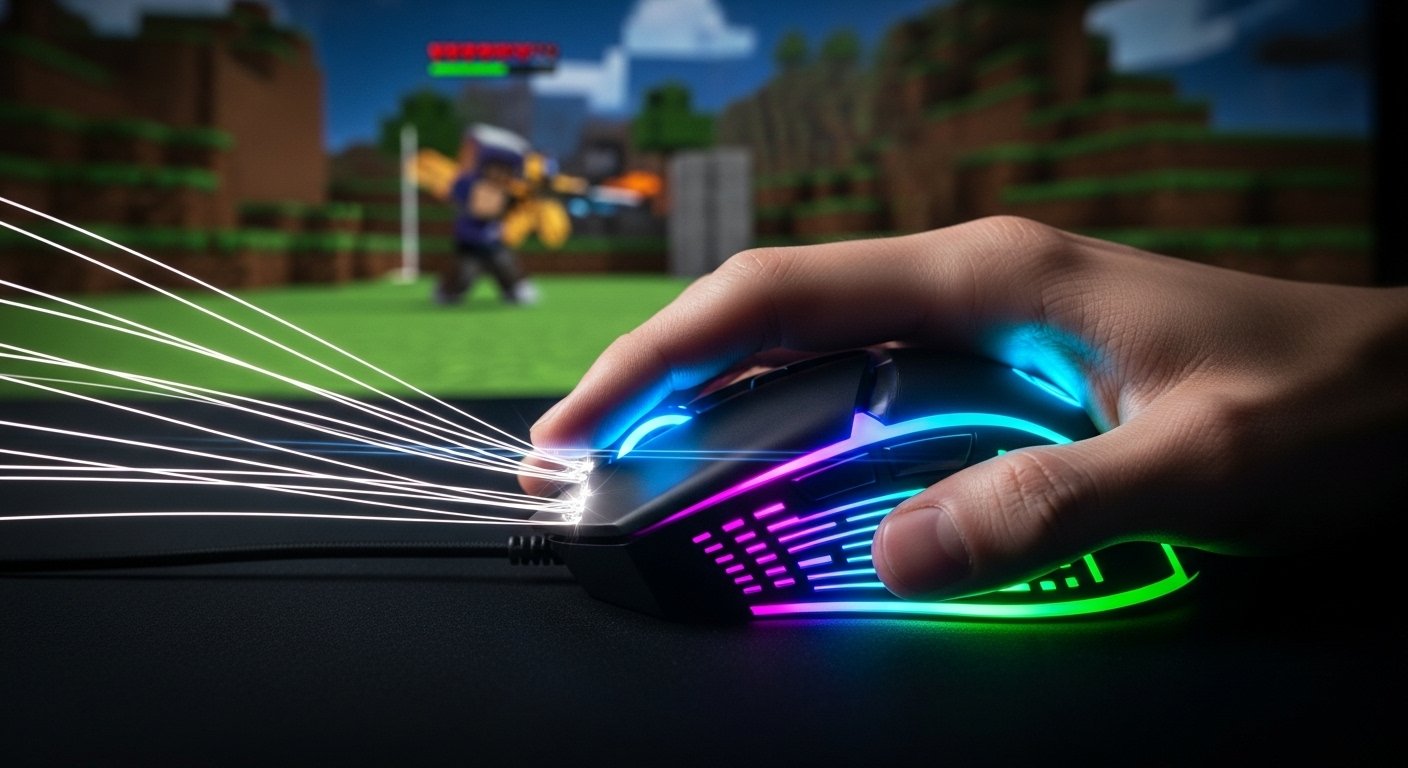A high clicking speed can be the difference between victory and defeat in competitive gaming. While some players seem to have naturally fast fingers, the truth is that a high CPS (Clicks Per Second) is a skill that can be learned and improved. If you’re wondering how to increase your CPS, the answer is a combination of mastering the right techniques, optimizing your hardware, and following a consistent practice routine. This guide provides a complete, actionable plan to take your clicking speed to the next level.
Executive Summary: Your Path to Faster Clicks
Increasing your Clicks Per Second (CPS) is a trainable skill that involves three key areas: learning specific clicking methods like jitter and butterfly clicking, choosing and configuring the right gaming mouse, and performing regular practice drills to build muscle memory and endurance. Many gamers believe that fast clicking is a natural talent, but by focusing on these three areas, anyone can significantly improve their clicking rate. This guide will walk you through ten specific, actionable tips that cover the techniques, gear, and training you need to achieve a much higher CPS.
First, What Is CPS and Why Does It Matter?
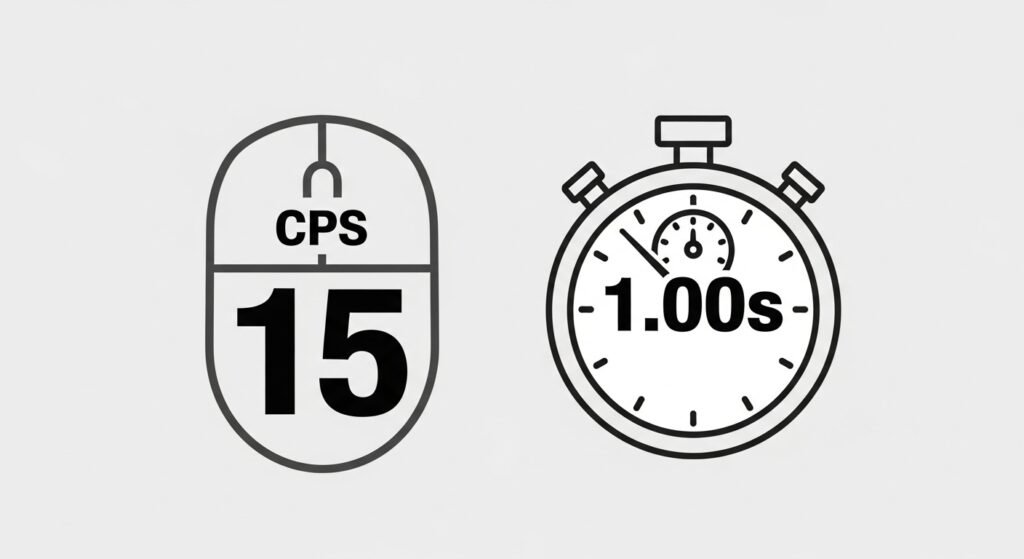
Before you can improve your clicking speed, it’s important to understand what you’re measuring and why it’s a valuable skill in certain games. CPS is a simple concept, but mastering it can give you a significant competitive edge.
A Simple Definition of Clicks Per Second (CPS)
Clicks Per Second (CPS) is a measurement of how many times you can click your mouse button in one second. It’s a straightforward test of your raw clicking speed and is often used as a benchmark for a player’s mechanical skill and finger dexterity. Your clicking rate is typically measured using an online click test or CPS counter, where you click as fast as possible for a set amount of time (usually 1, 5, or 10 seconds) to get your score.
Which Games Benefit Most from a High CPS?
While not every game requires a high CPS, it provides a massive advantage in several popular genres.
- Minecraft PvP: This is the most well-known game where a high CPS is critical. In Player vs. Player combat, the game registers each click as an attempted hit. A higher CPS means you can land more hits on an opponent in a shorter amount of time, giving you a major advantage in fights.
- Clicker Games: In games like Cookie Clicker, AdVenture Capitalist, or other idle games, your progress is directly tied to your clicking rate. A higher CPS means you earn resources and advance much faster, especially in the early stages of the game.
- Rhythm Games (like Osu!): For games that require fast and precise inputs to the beat of the music, a high CPS is essential. While accuracy is also key, the ability to click rapidly is necessary to master fast-paced songs and clear difficult sections.
Part 1: The Core Clicking Techniques (How to Click)
The single biggest jump in your Clicks Per Second (CPS) will come from moving beyond normal clicking and learning the specialized techniques used by pro gamers. Each method uses different muscles and requires practice to build muscle memory. We will break down the three main methods step-by-step.
1. Master Regular Clicking: Building Your Foundation
Before learning advanced methods, you must optimize your regular clicking. This is the standard method where you use your finger muscles to press the mouse button.
- Use a Light Touch: A common mistake is pressing the button down hard. This is slow and causes fatigue. Focus on a light, quick tap just firm enough to register the click.
- Stay Relaxed: Keep your finger, hand, and forearm as relaxed as possible. Tension is the enemy of speed.
- Find Your Rhythm: Practice clicking at a steady, consistent pace. Your goal is to make this basic motion as efficient as possible. A good target for fast regular clicking is 6-8 CPS.
2. Learn to Jitter Click: A 3-Step Guide for Rapid Vibrations
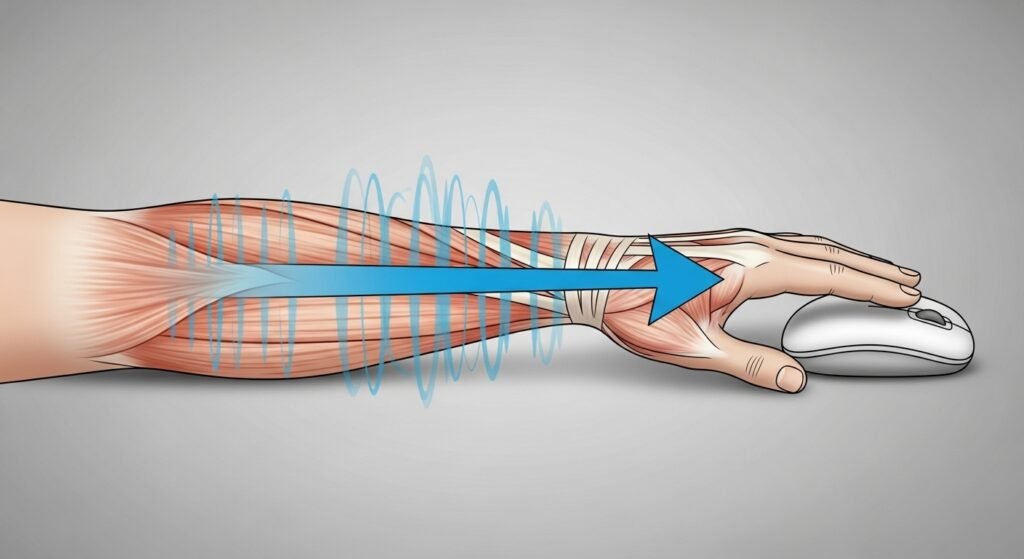
Jitter clicking is an advanced technique that uses arm vibrations to click much faster than your finger muscles alone can manage. It can help you reach 10-14 CPS.
- Tense Your Arm: Stiffen the muscles in your forearm and wrist. The key is to create tension that you can turn into a vibration, almost like you’re shivering from cold.
- Position Your Finger: Lightly rest your index finger on the mouse button. Your finger should be straight and should not press down.
- Vibrate and Click: Let the tension in your arm create a rapid vibration or tremor. This tremor will cause your finger to rapidly tap the mouse button. The clicks come from your whole arm shaking, not from your finger moving up and down.
Pro Tip: Jitter clicking can be tiring and cause hand strain. Take frequent breaks and stretch your wrist to avoid injury.
4. Learn to Butterfly Click: A 4-Step Guide Using Two Fingers
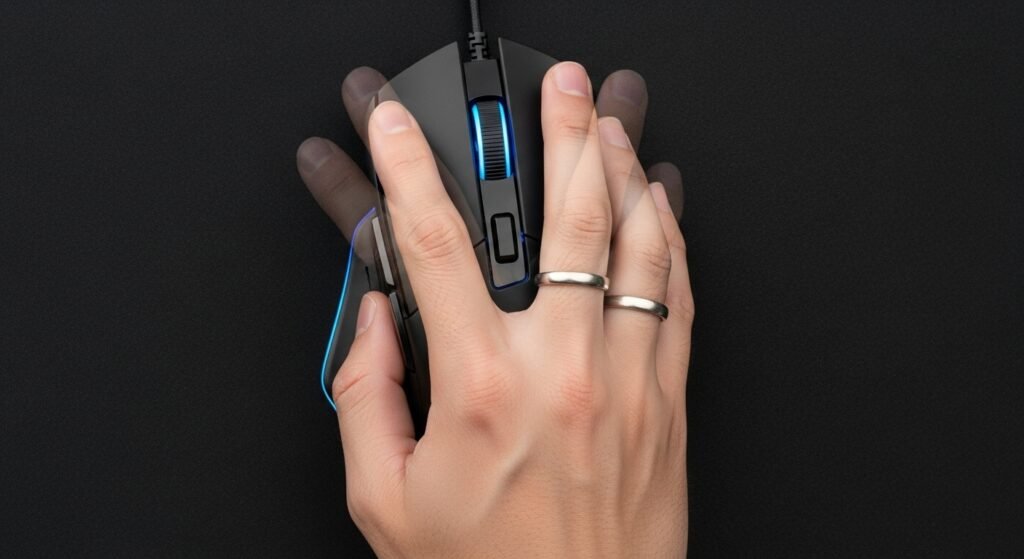
Butterfly clicking involves rapidly alternating two fingers on a single mouse button to double your clicking speed. This method can achieve an incredible 15-25 CPS.
- Adjust Your Grip: Hold your mouse primarily with your thumb, ring finger, and pinky. This frees up your index and middle fingers.
- Position Both Fingers: Rest both your index and middle fingers lightly on the surface of the main mouse button (e.g., the left button).
- Alternate Taps: Begin rapidly tapping the button, alternating between your index and middle finger. It should feel like you are drumming your fingers very quickly on a tabletop.
- Find the Rhythm: Focus on a consistent and even rhythm. The goal is to get a smooth, steady stream of clicks.
Pro Tip: This technique works best on mice with wide buttons and a low profile, as a high ridge between the left and right buttons can get in the way.
A Note on Drag Clicking: The Highest CPS (and Its Risks)
Drag clicking is a method where you gently drag your finger across the mouse button, using the surface friction to cause the switch to register dozens of clicks in a single pass. While it can produce the highest CPS (sometimes over 100), it has two major risks:
- It Destroys Your Mouse: Drag clicking causes extreme wear on the mouse’s micro-switches and can break them quickly.
- It Can Get You Banned: Many game servers, especially in Minecraft PvP, detect the unnaturally high click rate of drag clicking as a form of cheating or macro use, which can result in a permanent ban.
For most competitive gamers, mastering jitter or butterfly clicking is a much safer and more reliable path to a high CPS.
Part 2: Your Equipment (Optimizing Your Gear)
Your clicking technique is the engine, but your mouse is the transmission. If your equipment isn’t optimized for speed, all your practice will be wasted. A proper gaming mouse isn’t just for looks; its technical specifications can either unlock your potential or create a speed limit you can’t break.
4. Choose a Mouse with Low Debounce Time
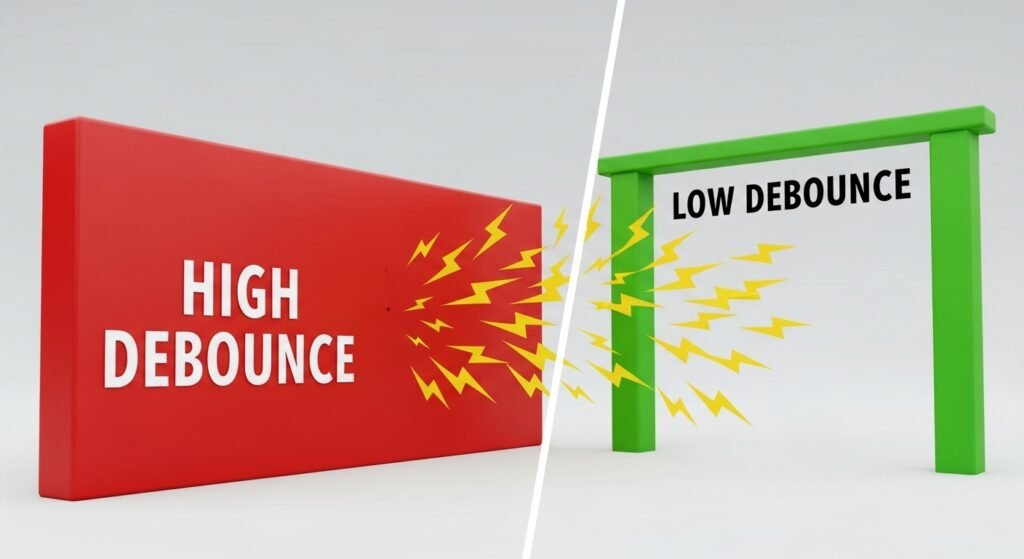
Debounce time is a tiny, built-in delay in a mouse’s software to prevent a single physical press from accidentally registering as a double-click. For normal office work, this is a helpful feature. For high-CPS gaming, it’s a speed limiter.
A high debounce time (e.g., 10-12 milliseconds) will physically prevent your mouse from registering clicks that are too close together, even if you are performing the technique perfectly. To increase your CPS, you need a gaming mouse that allows you to lower the debounce time in its software, ideally to 0-4 milliseconds. This is one of the most critical hardware features for butterfly and drag clicking.
5. Set Your Mouse Polling Rate to 1000Hz or Higher
Polling rate is the frequency at which your mouse reports its status (movement and clicks) to your computer. It’s measured in Hertz (Hz). A standard office mouse might have a polling rate of 125Hz, meaning it reports 125 times per second.
This can be a bottleneck. If you are clicking 15 times a second (15 CPS) with a 125Hz mouse, the mouse’s slow reporting rate can miss some of your inputs. A gaming mouse should be set to a polling rate of 1000Hz or higher. This means it reports 1000 times per second, ensuring that every single one of your rapid clicks is sent to the computer and registered by the game.
6. Find Your Perfect Mouse Grip
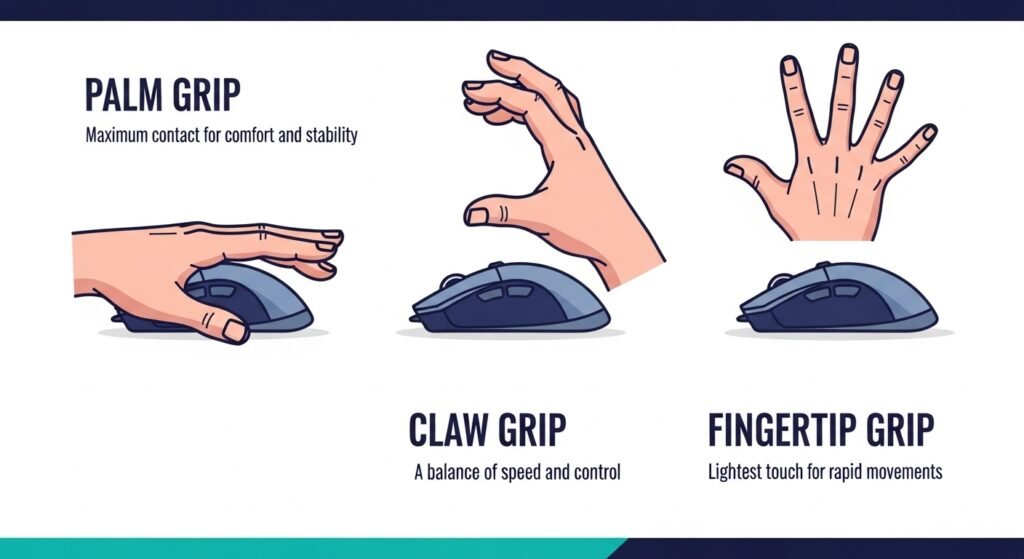
How you hold your mouse has a direct impact on your click speed because it determines which muscles you can use. There are three main styles:
- Palm Grip: Your entire palm rests comfortably on the body of the mouse. This is great for control and long-term comfort but generally the slowest for rapid clicking as it restricts finger movement.
- Claw Grip: Your wrist rests on the mousepad, and your palm may touch the back of the mouse, but your fingers are arched up in a “claw” shape. This provides a good balance of stability and finger mobility, allowing for faster clicks than a palm grip.
- Fingertip Grip: Only your fingertips touch the mouse; your palm does not make contact. This grip offers the maximum range of motion for your fingers, making it the best mouse grip for achieving the highest CPS with regular and butterfly clicking. However, it can be less stable for aiming.
Experiment with the claw and fingertip grips to find the style that gives you the best combination of speed and accuracy.
Part 3: Your Training (Building Your Skill)
Like any physical skill, from playing guitar to lifting weights, a high click speed requires consistent training. You need to warm up your muscles, practice with proper form to avoid injury, and follow a structured routine to build stamina and muscle memory.
7. Perform Daily Hand & Wrist Warm-ups
Before you start any clicking practice or intense gaming session, you must warm up. This prepares your fine motor skills for the rapid movements and helps prevent a repetitive strain injury (hand strain).
- Finger Taps: One by one, quickly tap each of your fingers against your thumb. Go back and forth from your index finger to your pinky for 30 seconds.
- Wrist Rotations: Gently and slowly rotate your wrists in a circular motion. Do this 10 times clockwise and 10 times counter-clockwise.
- Flexor Stretch: Extend your arm in front of you with your palm facing up. With your other hand, gently bend your wrist down, holding the stretch for 15-20 seconds to feel it in your forearm.
8. Practice Perfect Ergonomics
Good ergonomics will not only protect you from injury but will also make your clicking more efficient. A bad posture creates tension, and tension is the enemy of speed.
- Keep Your Wrist Straight: Your wrist position should be neutral and straight, not bent up, down, or to the side. If your desk is too high, use a wrist rest to keep your wrist level with your mouse.
- Support Your Forearm: Your forearm should be resting comfortably on your desk or your chair’s armrest. Letting it “float” in the air causes fatigue and strain.
- Sit Correctly: Sit up straight with your feet flat on the floor. Good overall posture reduces tension in your shoulder and arm, which helps your hand stay relaxed.
9. Use a Click Test to Track Your Progress
You can’t improve what you don’t measure. Using a click test is the best way to get instant feedback and track your improvement over time.
Once a day, before you begin practicing or gaming, use an online CPS counter or a tool like the famous Kohi Click Test. Test yourself for different durations (e.g., 1 second, 5 seconds, and 10 seconds). Write down your scores so you can see how your clicking rate improves with consistent training.
10. Adopt a 10-Minute Daily Practice Routine
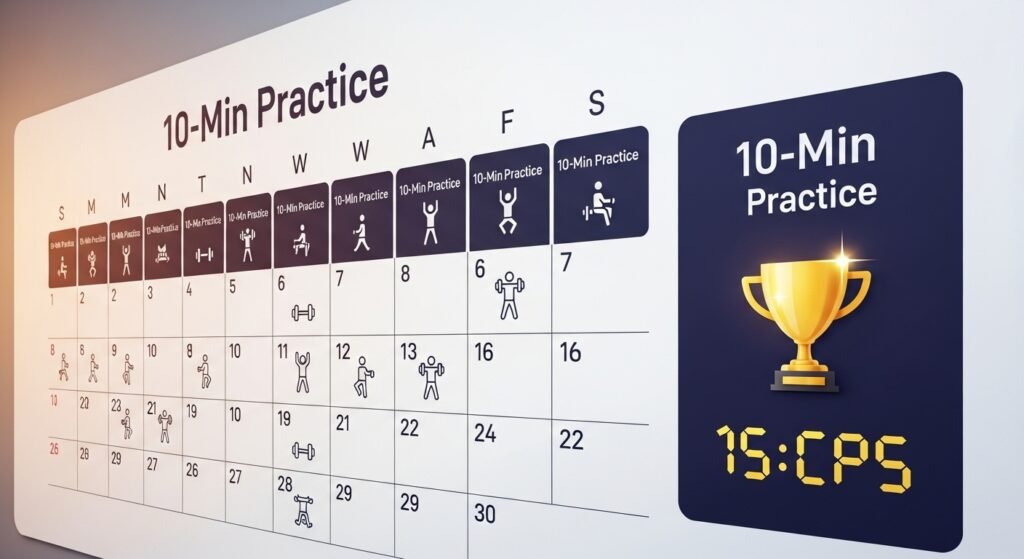
Short, focused practice drills are far more effective than long, infrequent sessions. A simple 10-minute daily routine can dramatically increase your CPS over a few weeks.
- (2 Minutes) Warm-up: Perform the finger taps and wrist rotations mentioned above.
- (6 Minutes) Technique Drills: Spend 2 minutes practicing your regular clicking form, 2 minutes on jitter clicking, and 2 minutes on butterfly clicking. During these drills, focus on consistent rhythm and proper form, not just your maximum speed.
- (2 Minutes) Endurance Test: Finish with a few short bursts to build stamina. Do a 10-second click test, rest for 30 seconds, and then repeat the cycle three more times.
Common Mistakes That Are Lowering Your CPS (And How to Fix Them)
Sometimes, the key to getting faster is to stop doing the things that are slowing you down. Here are some of the most common mistakes that limit a player’s click speed and how to correct them.
- Clicking Too Hard: Many players press the mouse button down with excessive force. This wastes energy, slows down the button’s return action, and causes fatigue much faster.
- The Fix: Focus on a light, minimal touch. Your goal is to press just hard enough to activate the switch and no harder.
- Being Too Tense: A stiff hand, wrist, and arm are slow. Tension is the enemy of the rapid, fluid movements required for high CPS.
- The Fix: Before you start a click test or a game, consciously relax your entire arm from your shoulder down to your fingertips. Take deep breaths.
- Using the Wrong Mouse: A standard office mouse is not built for speed. Its high debounce time and low polling rate will physically limit your maximum CPS.
- The Fix: If you are serious about increasing your CPS, invest in a decent gaming mouse that allows you to adjust these settings.
- Inconsistent Practice: Practicing for two hours one day and then not again for a week is ineffective. Building muscle memory requires consistency.
- The Fix: Stick to a short, daily practice routine. Ten minutes every day is far more effective than a long session once a week.
Frequently Asked Questions (FAQs)
What is a good CPS score for gaming?
Can certain clicking techniques get you banned in games?
Does changing my mouse DPI affect my CPS?
How long does it take to see a real improvement in my click speed?
Conclusion: Your Journey to Faster Clicking
You now have a complete training plan for how to increase your CPS. Remember that achieving a high click speed is a marathon, not a sprint. It is a physical skill that combines the right technique, the right gear, and consistent training. By following these 10 actionable tips, you are no longer relying on natural talent but are actively building a skill that can give you a real competitive edge.
Start with the 10-minute daily routine, be patient with your progress, and focus on proper form to avoid injury. Your fingers will get faster, your endurance will grow, and your CPS score will climb.
What is your starting CPS, and what is your goal? Share your progress in the comments below!

Hello, I’m John Harbour, a software developer passionate about creating innovative and accessible AI tools. As the creator of cps-checker.com, I enjoy building useful software and writing blogs to help people get the most out of my creations.

